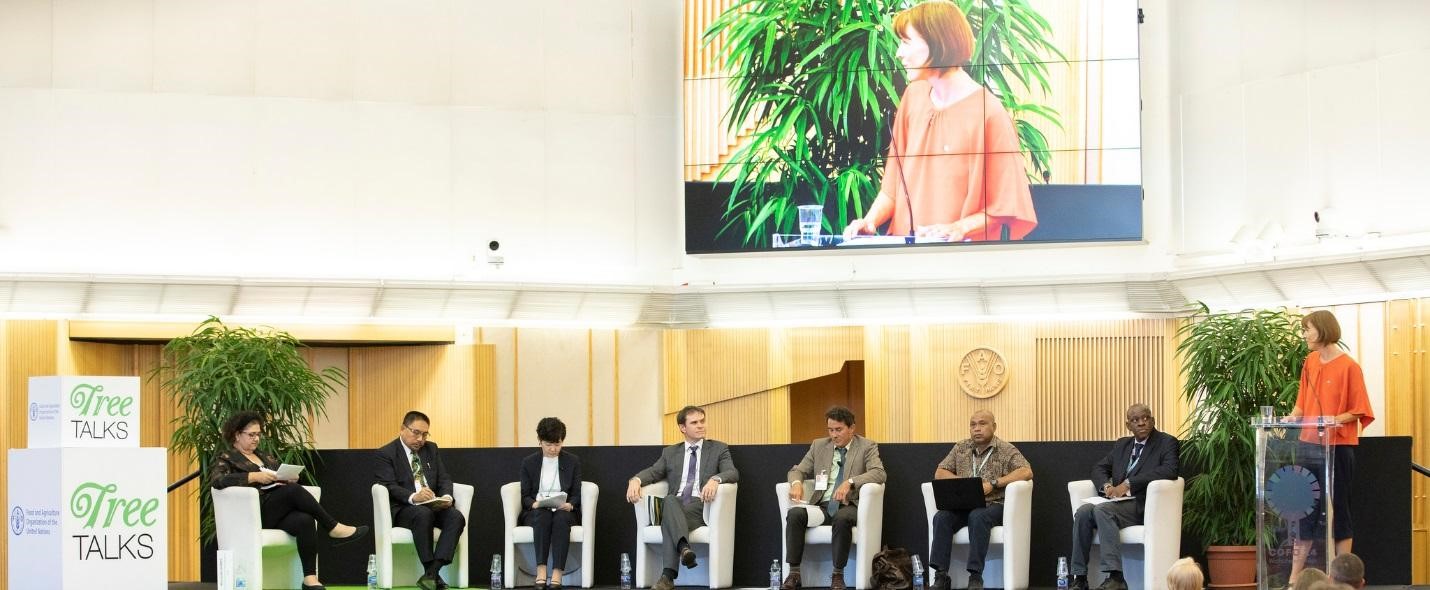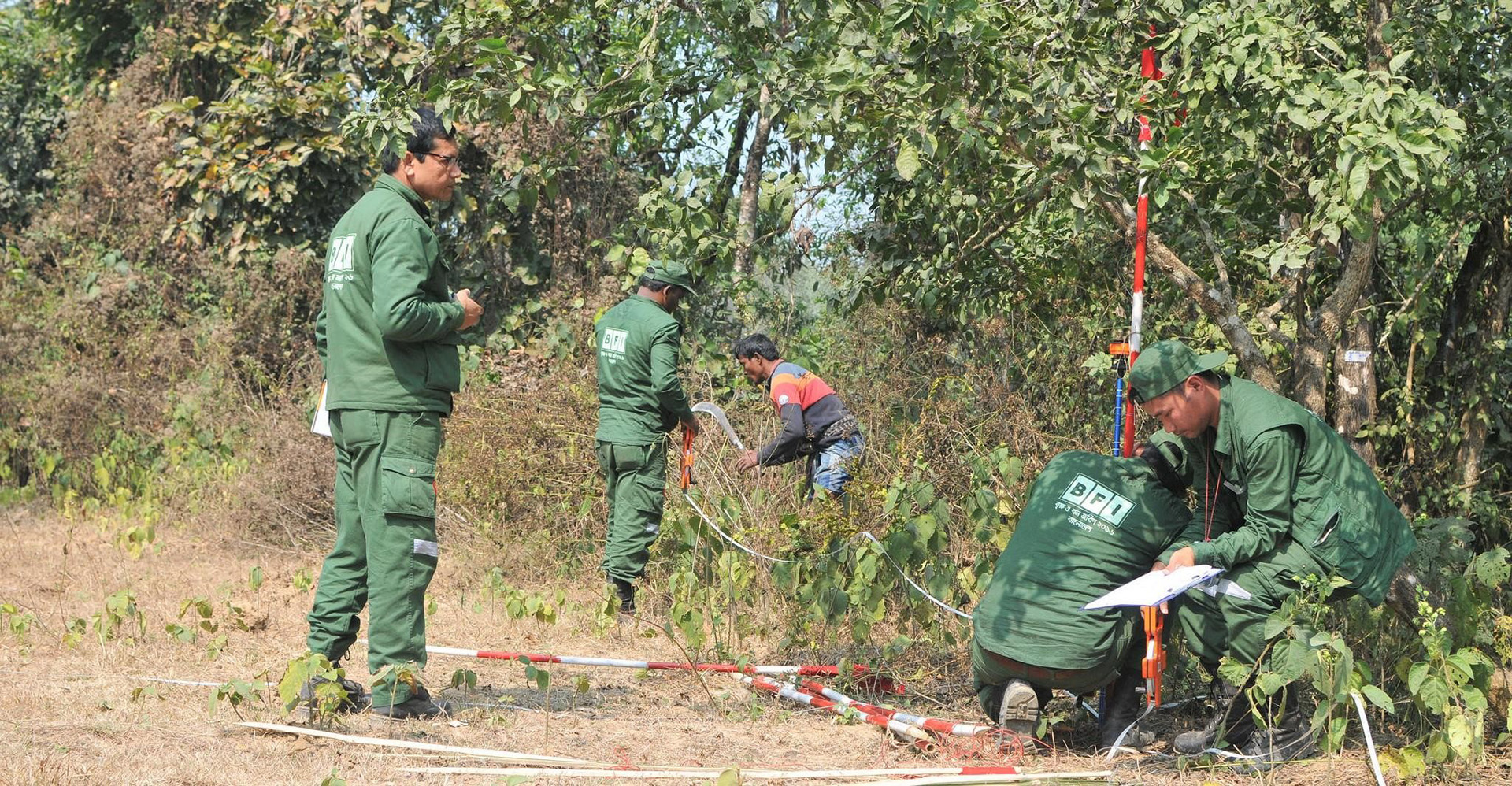Reliable forest monitoring systems are key to realizing the climate change mitigation potential of tropical forests. In fact, the 1997 Kyoto Protocol was not able to provide meaningful incentives for avoiding deforestation in tropical developing countries partly because of concerns that those countries could not monitor emission reductions accurately. The debate continued until 2007, when the UNFCCC Conference of the Parties (COP) decided to include reducing emissions from deforestation and forest degradation as a key element of the Bali Roadmap, laying the foundation for REDD+. Making REDD+ a reality has required an investment in a ‘readiness’ phase for tropical developing countries. Among other things, that includes building National Forest Monitoring Systems (NFMS) that can accurately and transparently track mitigation actions and facilitate the measurement of results. Notably, the United Nations Collaborative Programme on Reducing Emissions from Deforestation and Forest Degradation in Developing Countries (the UN-REDD Programme) was founded in 2008 to provide technical support on building NFMS as one of its goals.
Through this Programme and parallel efforts alike, donors have allocated funding, and developing country governments around the world have placed forest monitoring high on their agendas. As such, REDD+ has been catalytic in improving data collection and fostering a deeper understanding of forest resources. This information holds value well beyond REDD+ for improved forest management. But how far have countries progressed since 2008? Where do the remaining capacity gaps lie? How can existing momentum for forest monitoring capacity development be consolidated and further strengthened? In line with the 10-year anniversary of the UN-REDD Programme, these questions are being explored in a series of publications and events.
Progress and Achievements
Currently, FAO is building a unique database to measure progress in national forest monitoring capacity development. A survey has been conducted using a set of detailed indicators (an ‘NFMS scorecard’) in 16 tropical developing countries to gauge forest monitoring capacities in 2008, 2015 and 2018. Initial results indicate that countries have advanced significantly. Ten years ago, few of the countries assessed had capabilities for national forest monitoring. However, in 2018, most countries have high ratings, according to the NFMS scorecard. Full results will be presented in the forthcoming publication “Ten years of capacity development on national forest monitoring for REDD+ – much achieved yet more to do”.
We can also look at specific achievements in REDD+ reporting to measure the progress made in country capacity for forest monitoring and reporting. According to the recent publication “From Reference Levels to Results Reporting: REDD+ under the UNFCCC – 2018 Update”, key achievements made through 2018 include the following:
- Thirty-four countries have submitted Forest Reference Emission Levels/Forest Reference Levels (FREL/FRLs) – a benchmark for REDD+ performance- to the UNFCCC for technical assessment.
- Four countries have reported REDD+ results to the UNFCCC through REDD+ results submissions (in the REDD+ technical annex of their biennial update reports), totalling more than 6 billion tonnes of carbon dioxide-equivalent in emission reductions, mostly in Brazil;
Another important achievement is the contribution of REDD+ reporting to improving the transparency of countries reporting to the UNFCCC, a cornerstone of the Paris Agreement. There has been a fivefold increase in the number of countries reporting uncertainties on their FRELs, a key step on the road to making REDD+ transparent and verifiable.

Marieke Sandker delivers a ‘Tree Talk’[1] on recent progress of forest monitoring at the 6th World Forest Week in Rome, Italy. From left to right: Ms Alessandra GOMES (Director, Brazil’s INPE), Mr Ruandha Agung SUGARDIMAN (Director General of Climate Change, MoEF, Indonesia), Ms Naoko TSUKADA (Director, International Forestry Cooperation Office, Forestry Agency Japan), Till NEEFF (Moderator, FAO), Keith ANDERSON (Federal Office for the Environment, Switzerland), Mr Gewa GAMOGA (Papua New Guinea), Mr Jean-Paul KIBAMBE (Democratic Republic of the Congo), Marieke SANDKER (FAO).
Gaps in Current NFMS and REDD+ Reporting
While much progress has already been made, there are gaps remaining between current NFMS and REDD+ reporting and the accuracy and transparency expected by donors for payment of REDD+ results. Countries need to continue to strengthen National Forest Monitoring Systems for REDD+. As articulated in the FAO publication on this topic and the recent Tree Talk by Julian Fox, there is a need to innovate and identify ways to fast track technical capacity development for continued improvements in the accuracy and transparency of NFMS.
Some examples include:
- Enabling rapid technology transfer to partner countries supporting a diversity of forest monitoring approaches and ensuring IPCC compliance, through platforms such as Open Foris and SEPAL.
- Maintaining support, enhancing existing capacities and encouraging countries to improve their data and methods.
- Supporting multi-purpose NFMS that support both national and international needs as conveyed in a new publication and the Voluntary Guidelines for National Forest Monitoring.
- Encouraging South-South knowledge sharing of progress made and lessons learnt.
Moving Forward
A better understanding of what has been achieved and remaining gaps in capacity can help direct resources strategically towards filling those gaps. It can also build confidence in the potential of REDD+ to generate measurable, reportable and verifiable results. The importance of enhanced forest monitoring systems and tools to monitor land use change can be summed up by: better data – better decisions – better actions.
List of new publications and resources on National Forest Monitoring and Data Reporting:
- A new publication on the progress in REDD+ reporting “From Reference Levels to Results Reporting: REDD+ under the UNFCCC – 2018 Update”.
- FAO’s National Forest Monitoring and Assessment Working Paper No. 47 “Strengthening National Forest Monitoring System for REDD+”
- 6th World Forest Week Side Event on 19 July 2018 “Consolidating success: Progress on forest monitoring for REDD+.” Webcast link here.
- Forthcoming publication ‘“Ten years of capacity development on national forest monitoring for REDD+ – much achieved yet more to do.”



